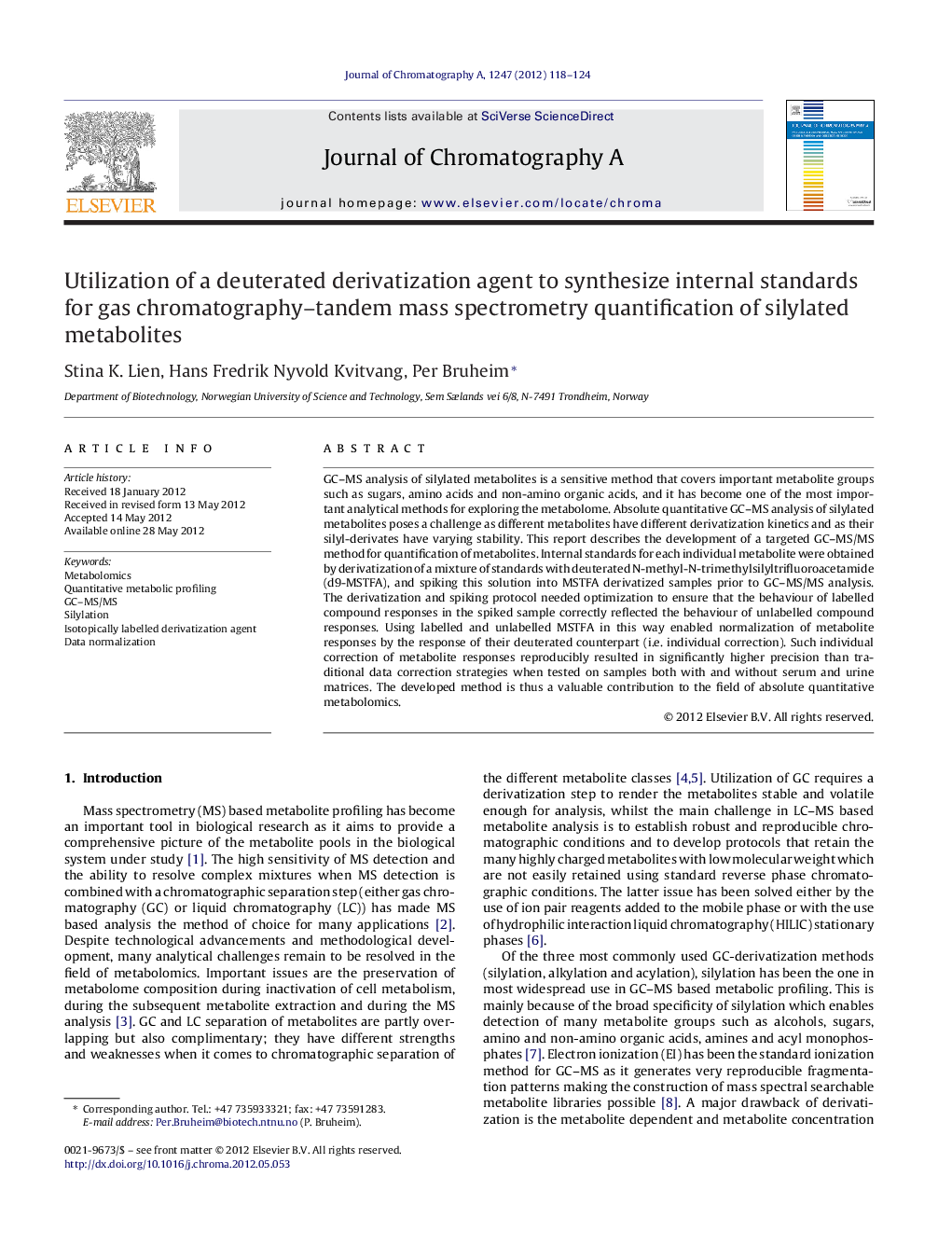| Article ID | Journal | Published Year | Pages | File Type |
|---|---|---|---|---|
| 1206127 | Journal of Chromatography A | 2012 | 7 Pages |
GC–MS analysis of silylated metabolites is a sensitive method that covers important metabolite groups such as sugars, amino acids and non-amino organic acids, and it has become one of the most important analytical methods for exploring the metabolome. Absolute quantitative GC–MS analysis of silylated metabolites poses a challenge as different metabolites have different derivatization kinetics and as their silyl-derivates have varying stability. This report describes the development of a targeted GC–MS/MS method for quantification of metabolites. Internal standards for each individual metabolite were obtained by derivatization of a mixture of standards with deuterated N-methyl-N-trimethylsilyltrifluoroacetamide (d9-MSTFA), and spiking this solution into MSTFA derivatized samples prior to GC–MS/MS analysis. The derivatization and spiking protocol needed optimization to ensure that the behaviour of labelled compound responses in the spiked sample correctly reflected the behaviour of unlabelled compound responses. Using labelled and unlabelled MSTFA in this way enabled normalization of metabolite responses by the response of their deuterated counterpart (i.e. individual correction). Such individual correction of metabolite responses reproducibly resulted in significantly higher precision than traditional data correction strategies when tested on samples both with and without serum and urine matrices. The developed method is thus a valuable contribution to the field of absolute quantitative metabolomics.
► Development of a quantitative GC–MS/MS method for silylated metabolites. ► Internal standards prepared by use of an isotopically labelled derivatization agent. ► The derivatization and spiking protocol needed optimization. ► EI more sensitive than PCI for silylated metabolites. ► Use of individual internal standards significantly improved analytical precision.
